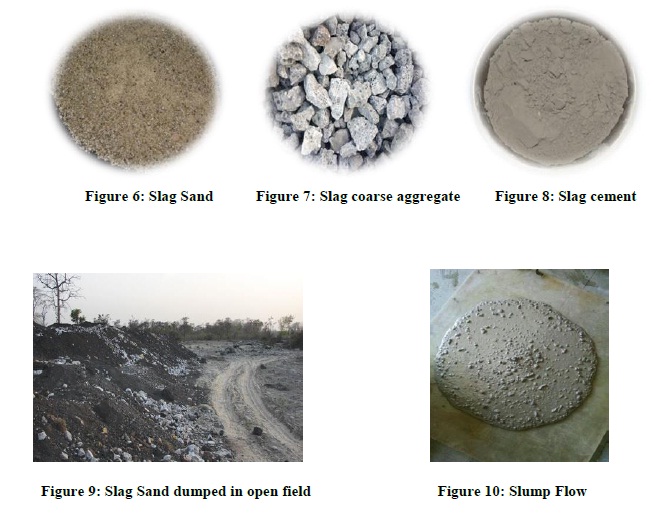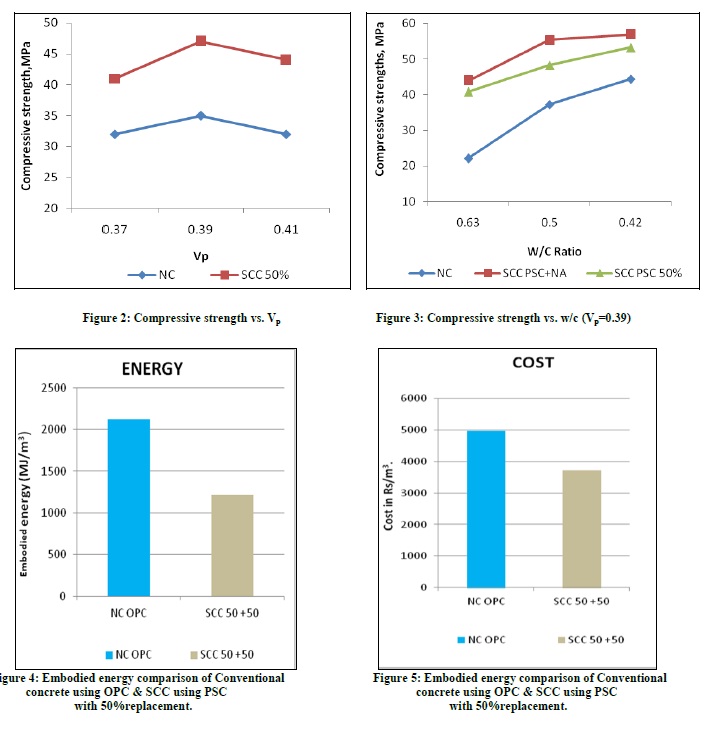





Published on Nov 30, 2023
Generation of huge amounts of waste/marginal materials and their disposal are some of the greatest challenges faced by the day industry since a long time. Added to that the manufacture of ordinary Portland cement will have impact on the environment due to its emission of carbon dioxide and use of natural aggregates and pose a problem of sustainability in the backdrop of depletion of natural resources. There is an urgent need to minimise the use of conventional materials to benefit the mankind in the design of concrete.
Slag aggregates are an unavoidable by-product of the steel and iron industry which can be used as an alternative. Hence, an attempt is made in this study to replace conventional concrete with the development of innovative green SCC by partial replacement of ingredients of conventional concrete like cement, fine aggregates and coarse aggregates by slag with emphasis on sustainability.
Keywords : Green concrete, SCC, Slag fine and coarse aggregates, GGBS, Sorptivity, Embodied energy, Cost analysis
To find the optimum replacement percentage by assessing the compressive strength of SCC with slag aggregates and compare it to that of SCC without any slag content and with Normal Concrete.
To evaluate the durability of SCC with slag aggregates by conducting sorptivity test.
Cost analysis of SCC produced with slag aggregates.
Calculation of Embodied energy for the manufacture of SCC with slag aggregates..
SCC trial mixes are developed based on the absolute volume method of mix design, choosing volume of paste (Vp) between 0.35 and 0.41. This method was developed by S. Girish (“Influence of powder and paste on flow properties of SCC”, Journal of Construction and Building Materials, (ELSEVIER-Science Direct), 24, 2481-2488-2010) at B.M.S College of Engineering and reduces the number of trial mixes for SCC. Taking the total volume of concrete as one unit, the total volume of aggregates can be calculated by deducting the volume of paste from unit volume.
Different mixes were developed for cement content of 300kg/m3, 375kg/m3 and 450kg/m3 and water content of 180kg/m3 and 190kg/m3. For each of these mixes, slag fine and coarse aggregates are used to replace aggregates by volume, from 0-100%.
The SCC mixes so developed are tested for basic fresh properties and for each of the SCC mixes, 3 cubes of 100mm were casted and tested at 7, 14 and 28 days compressive strength.
Durability of the SCC is tested with sorptivity test. Accelerated curing is also conducted.

From the study conducted, it is observed that with decrease in w/c ratio, the compressive strength increases. In the preliminary study conducted, it can also be observed that with increase in slag fine and coarse aggregates, the compressive strength increases till up to 50% replacement, beyond which it reduces, for a given w/c ratio, Vp and water content.


30% strength is found to be increased on using SCC with natural aggregates when compared with NC.
SCC produced on using PSC is found to give 25% more compressive strength compared to conventional concrete.
SCC with 50% replacement of natural fine and coarse aggregate with Slag aggregates is compared to SCC with natural aggregates there is a decrease of 9% strength.
But comparing SCC with 50% replacement of natural fine and coarse aggregate with Slag aggregates with conventional concrete we see that there is increase of 22% in strength.
A unique attempt is made to develop SCC using marginal materials partially replacing the natural ingredients.
Compressive strength of SCC is much higher than Normal concrete for a given w/c ratio.
Compressive strength of SCC using slag aggregates with slag cement is 30 percent more than conventional concrete.
The SCC developed using marginal materials is superior to the conventional concrete on keeping the same parameters
Thus slag can be therefore be used as an effective alternative to natural aggregates which will have a long term effect on sustainability
The SCC using marginal materials is cost effective and also energy saving thereby, reducing carbon footprints.
Further experiments can be carried out by using other filler materials like Fly ash, quarry dust, silica fume etc.
Behavior of Slag sand with fine aggregates other than natural sand can also be studied.